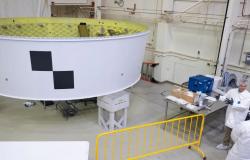The primary sector represents 39.8%, and its main activities are: 1) agriculture (rice, wheat, corn, sunflower, soybeans, citrus fruits, blueberries, etc.), 2) livestock: it is the main producer of poultry meat in the country and an important producer of milk and pigs, and 3) forestry: the province has extensive forest areas, mainly eucalyptus and pine, which are used for the production of wood and cellulose.
In the Industrial Sector it represents 30.2%, and its main activities are: 1) food and beverages, 2) wood and furniture, 3) metalworking, 4) textiles, and 5) chemistry.
Likewise, it has other dynamic sectors of the economy that complete the remaining 30%, such as tourism (thanks to its natural and historical attractions), and services (such as commerce, education and health).
On the other hand, our province is located in a strategic geographical position, in the center of Mercosur, which allows easy access to the markets of Argentina, Brazil, Paraguay and Uruguay, which represents a great advantage for trade and investment.
Likewise, it is bathed by two large rivers (El Paraná and Uruguay) that provide access to important river navigation routes (Hidrovía) and an enormous energy generation capacity (Salto Grande).
It is also one of the provinces with the largest amount of fresh water in the country (which represents a vital resource for the development of livestock, agriculture, industry and tourism), and has important native forests that house a great biodiversity of flora and fauna (Palmar Yatai, gallery forests, etc.).
It is a province that has a temperate climate and abundant rainfall, which allows the development of a wide variety of agricultural, livestock, industrial and tourist activities.
In summary, without a doubt the province of Entre Ríos has a series of important advantages, which make it a province with great potential for economic and social development.
However, the size of its economy (PBGs) is in 14th place nationally in 2023 (INDEC), and if we compare Entre Ríos with the other provinces that make up the central region (Santa Fé and Córdoba), we see that It has lower income levels (if we measure it both in terms of GDP per capita and in the Human Development Index), which means that the province generates less income for each inhabitant in the Region.
In 2023, the total volume of the province’s exports was 1,115 million dollars, which meant a decrease of 42% compared to the previous year.
For its part, poverty was located at 44.4%, above the region and the nation (38.6% and 39.2%, respectively), while in terms of the indigence line they maintain similar indicators in around 8%.
In the last decade, the participation of Entre Ríos in the national GDP has had an average annual growth of 2.7% (11th place), this growth has been lower than the national average, which was around 3.5% annually. during the same period.
However, despite its great potential, in recent years it has had an economic performance below its possibilities, and therefore has not yet reached its maximum potential.
The current governor, Rogelio Frigerio, has highlighted on several occasions the economic potential of Entre Ríos, stating that “the province has not managed to exploit its full potential and that Santa Fe and Córdoba have known how to develop their economies in a more diversified way and have achieved a greater growth in recent years.” Likewise, he highlighted that “for Entre Ríos to reach its maximum potential, a change is necessary, a government is needed that is efficient, transparent and that generates trust in the private sector.”
Many sectors agreed with his diagnosis and asked for a change of course in provincial management.
Without a doubt, we agree with the Governor’s words regarding the potential of our province, and the need for a resounding change in the economic and productive model.
This is not an easy task, but we do not believe it is impossible either. Today we are seeing unthinkable things, this year the area planted with rice is the lowest in the last 25 years (16,000 hectares), our citrus production with very little outlet to international markets (while in Paysandú an industry with Argentine capital is installed that will produce lemon essential oil, juice and dehydrated peel, employing more than 140 workers permanently, and more than 1,000 temporary agricultural workers), paper plants operating on the other side of the river (from which we receive the pollution, but without participating of profits, job creation, etc.), and despite having a significant forest area, Entre Ríos has not yet managed to develop an internationally competitive timber industry, etc.
For Entre Ríos to reach its full potential, a radical change in the way of thinking and doing things is necessary. A more dynamic, diversified and sustainable development model is needed that makes the most of the province’s strengths.
But, this resounding change will only be possible if the government has a comprehensive transformation plan, which proposes a more dynamic economy with greater added value, which allows us to take advantage of the potential of our province.
For the new development paradigm to be successful, it is necessary to create an ecosystem that drives it, and this requires the commitment and collaboration of all sectors of society: government, companies, academia, civil organizations and citizens.
A comprehensive transformation plan must include measures, among others, such as: Promote high value-added production. Promote the development of SMEs and entrepreneurship. Improve the infrastructure of routes and ports. Invest in renewable energy. Promote sustainable agricultural and livestock practices. Invest in research and development. Implement a tax incentive program. Provide support to startups. Promote Entre Ríos as a tourist destination. Improve public management. Invest in energy infrastructure, expand Internet and telecommunications coverage. Guarantee quality education. Provide job training. Strengthen the rule of law. Promote citizen participation.
In short, Entre Ríos has invaluable natural resources, an imponderable strategic location and a hardworking town, which, with a true paradigm shift in the development model and a comprehensive transformation plan, can become a prosperous, sustainable and inclusive province. . A place where the quality of life is excellent, opportunities abound and each person’s potential can flourish.






